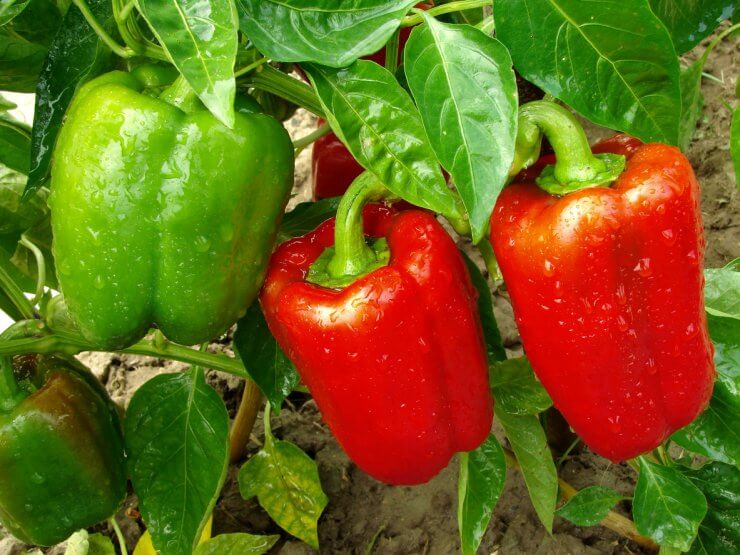
Red and green bell peppers growing in the garden
Bell peppers are the most common variety of pepper. They’re also, as it turns out, among the fussiest of the pepper family. Think: Goldilocks. The soil and air temperature need to be not too warm, nor too cool, but just right. This goes back to their tropical roots, where temperatures tend to fluctuate less than in the more temperature regions of North America.
Now, just because the bell pepper is the type of pepper you’re most likely to find at the supermarket, there’s a lot more to the bell pepper world than you may have imagined.
Bell peppers come in a wide variety of colors, from white to a deep purple. Most bell peppers are green at some point. At this stage, the peppers are still technically unripe, but definitely edible (and nutritious). But if you can be patient—like three weeks more patient—then you can harvest a virtual rainbow of peppers that will reward you for your patience with tender flesh and rich, sweet taste. You may never go back to plain old green peppers again!
Bell peppers, whether full-size or mini, all share the same basic growing needs. The growing season tends to be long, which means most of us need to start our plants indoors well ahead of the last frost.
Bell peppers are classified as Capsicum annuum. They’re part of the Solanaceae family, which includes tomatoes, eggplant, and potatoes. When you’re planning your garden, make sure you don’t plant your peppers where your potatoes, tomatoes, or eggplant have been. You will find many types of peppers under the classification of Capsicum annuum. But there are so many different types to cover, from sweet to spicy, we’re keeping our focus on this ever-popular, versatile type of pepper. Other guides will focus on the bell pepper’s spicier cousins.
Here’s a sampling of bell peppers popular among home gardeners:
- Ace
- Antebellum
- Bayonet
- Bell Boy
- Big Red
- Blitz
- California Wonder
- Canape
- Canary Bell
- Cheery Sweet
- Chocolate Beauty
- Classic
- Cupid
- Early Prolific
- Eros
- Galileo
- Garfield
- Gourmet
- Islander
- Lipstick
- Lunchbox
- Orovelle
- Procraft
- Purple Beauty
- Revolution
- Snowball
- Sprinter
- Touchdown
- Ultra Gold
- Yankee Bell
- Yolo Wonder
You’ll find plenty of variety of bell pepper seeds available at seed companies and garden centers; you’ll also likely find seedlings ready for transplant, which is a huge help if you don’t have a lot of indoor prep space to get your own seedlings growing. Ask your local extension center which type of bell pepper is best suited for your gardening needs.
Which type of bell peppers have you grown? Do you have a preference? Please share your opinion.


 Previous
Previous


I really like Big Bertha, Park’s Whopper, Ozark Giant, (or some such) from Baker Creek), and Orange Blaze. Like those with thick walls and great flavor! Tm.
Hi.
I have a bell pepper not sure what variety, but this girl is on her second year of producing. I was away for 2 months. It was out side. When I came back, it had spiders nested in it. Cut it back ,cleaned it all up and brought it in. Due to cold weather. Shes back growing and growing peppers. An amazing plant.